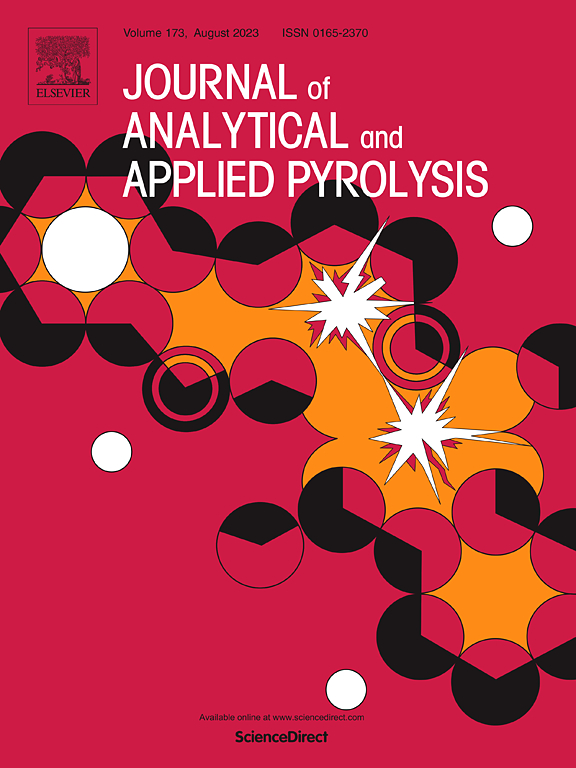The evolution law of nano-pore structure characteristics during the underground pyrolysis process of tar-rich coal
IF 6.2
2区 化学
Q1 CHEMISTRY, ANALYTICAL
引用次数: 0
Abstract
The dynamic evolution of nanopore architectures critically governs the adsorption efficiency of hydrocarbons in tar-rich coal during subsurface pyrolysis, offering a pathway to optimize product yields. In this study, two types of Chinese coal were analyzed using the small-angle neutron scattering (SANS) instrument to monitor changes in nanopore structure throughout the underground pyrolysis process. The experiment uses the in-situ SANS instrument at the China Spallation Neutron Source (CSNS), with temperatures ranging from 30℃ to 800℃, under two different heating rates (5 and 20℃/min). These measurements were complemented by Brunauer-Emmett-Teller (BET) analysis, scanning electron microscopy (SEM) and thermogravimetric analysis (TGA). The experimental results show that the average nanopore size increases progressively with rising temperatures, particularly between 300°C and 500°C during the devolatilization stage, where it grows from 112.8 nm to 131.3 nm. Furthermore, at elevated temperatures, coal nanopores tend to become isotropic, regardless of their initial distribution. A slower heating rate results in higher overall scattering intensity and more pronounced nanopore development.
富焦油煤地下热解过程中纳米孔隙结构特征的演化规律
纳米孔结构的动态演化决定了富焦油煤在地下热解过程中对碳氢化合物的吸附效率,为优化产物收率提供了一条途径。本研究采用小角中子散射(SANS)仪对两种煤进行了地下热解过程中纳米孔结构的变化监测。实验采用中国散裂中子源(CSNS)的原位SANS仪器,温度范围为30 ~ 800℃,加热速率为5℃/min和20℃/min。这些测量由布鲁诺尔-埃米特-泰勒(BET)分析、扫描电子显微镜(SEM)和热重分析(TGA)补充。实验结果表明,随着温度的升高,纳米孔的平均尺寸逐渐增大,特别是在300 ~ 500℃脱挥发阶段,纳米孔的平均尺寸从112.8 nm增大到131.3 nm。此外,在高温下,煤纳米孔倾向于各向同性,而不管它们的初始分布如何。较慢的加热速率导致较高的总散射强度和更明显的纳米孔发育。
本文章由计算机程序翻译,如有差异,请以英文原文为准。
求助全文
约1分钟内获得全文
求助全文
来源期刊
CiteScore
9.10
自引率
11.70%
发文量
340
审稿时长
44 days
期刊介绍:
The Journal of Analytical and Applied Pyrolysis (JAAP) is devoted to the publication of papers dealing with innovative applications of pyrolysis processes, the characterization of products related to pyrolysis reactions, and investigations of reaction mechanism. To be considered by JAAP, a manuscript should present significant progress in these topics. The novelty must be satisfactorily argued in the cover letter. A manuscript with a cover letter to the editor not addressing the novelty is likely to be rejected without review.

 求助内容:
求助内容: 应助结果提醒方式:
应助结果提醒方式:


